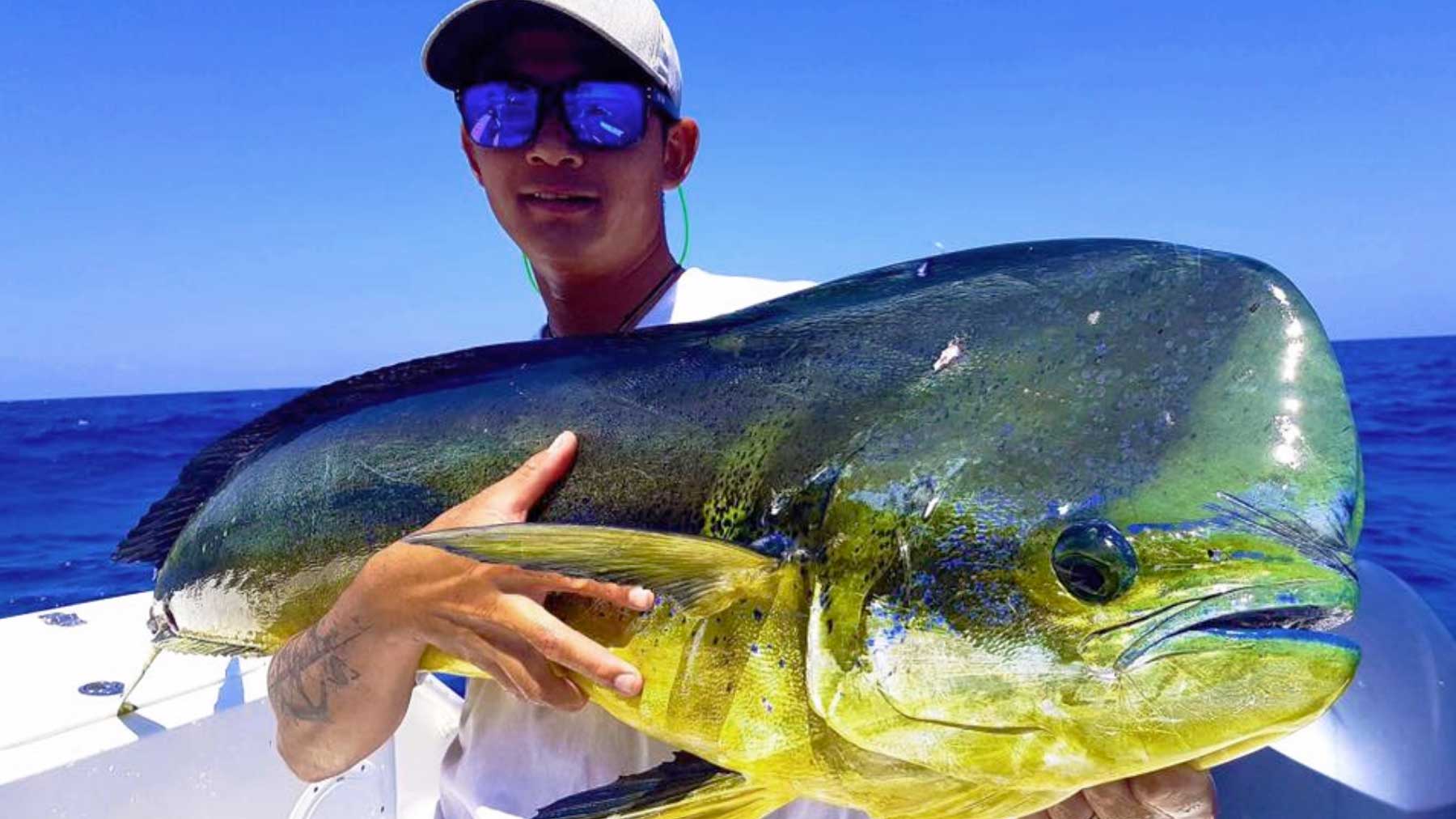
Because mahi are sexually productive at an early age and are so fast growing, the popular scientific theory is that this species can withstand a high rate of exploitation. All mahi can reproduce by three to five months of age or 22 inches in length.
The eggs, which are about the size of the head of a pin, hatch in about 60 hours. The little fish start growing immediately. Mahi spawn in pairs, rather than communally, with spawning occurring year-round In Hawaiian waters.
The dolphinfish (dorado, mahi mahi) is so spectacularly colorful that it seems impossible that it could have evolved by accident. The back and head are iridescent, glowing neon blue and chartreuse green. The sides are gold sprinkled with a mixture of bright blue and black spots. The belly is a silvery-white or yellow. The dorsal fin is rich blue. These are the natural colors of the fish and are apparently maintained during normal undisturbed activity.
They also feed both at night and during the day. They have been documented to diving to 400 feet at night to feed. Data also confirms that the majority of fish spend 50-80 percent of their time within the top 30 feet of the water column.
In fact, biologists say the fish’s color is the result not only of pigment, but also of microscopic structures in the skin, which the fish can manipulate to change its color. The color changes could have evolved for spawning selection, or perhaps as a camouflage when approached by predators.
